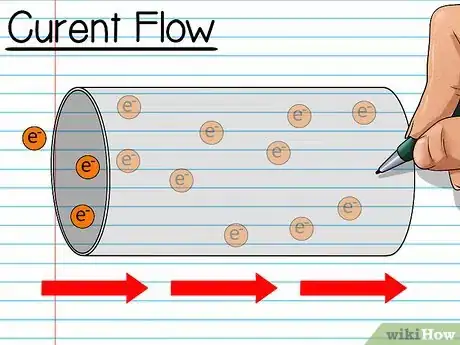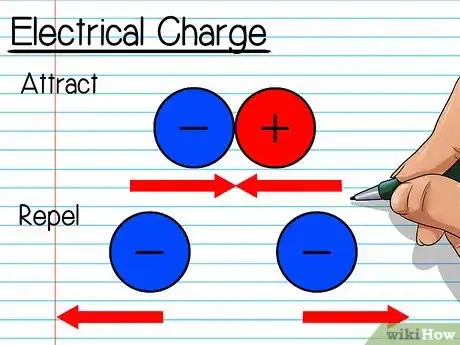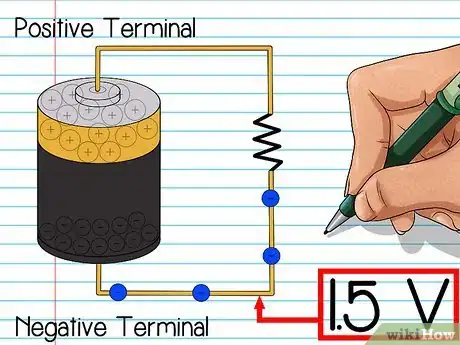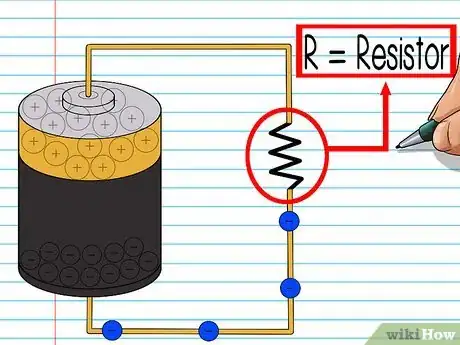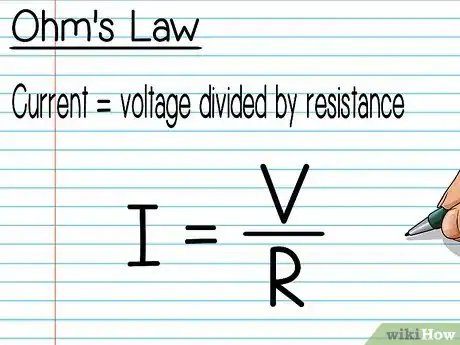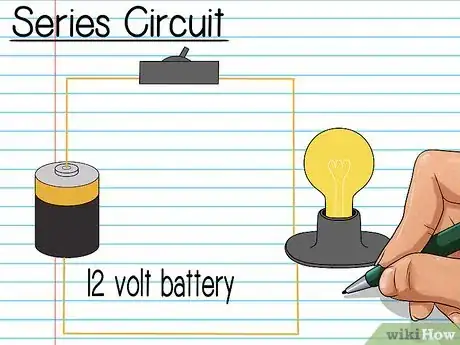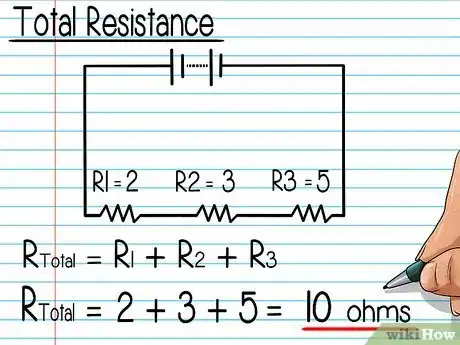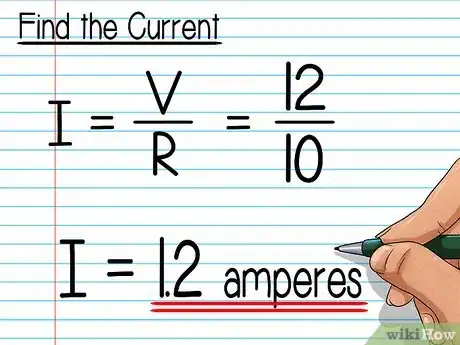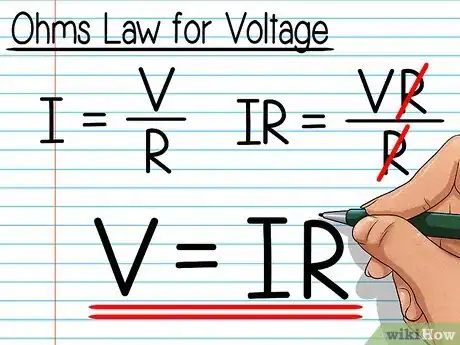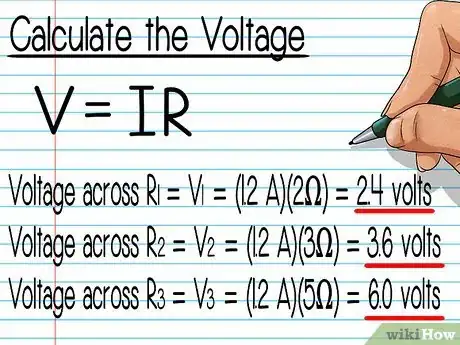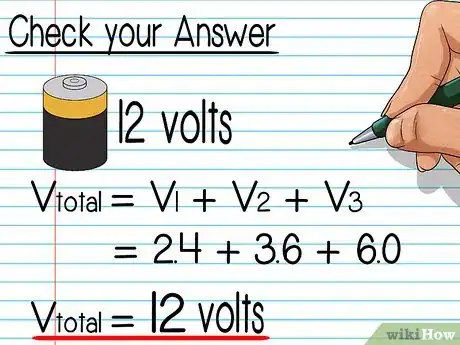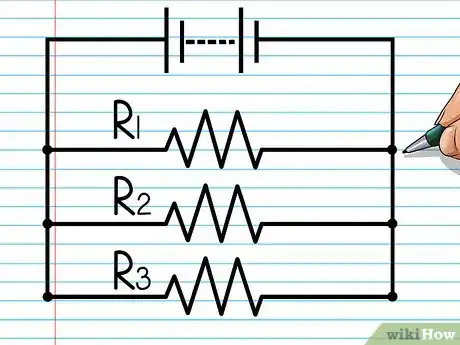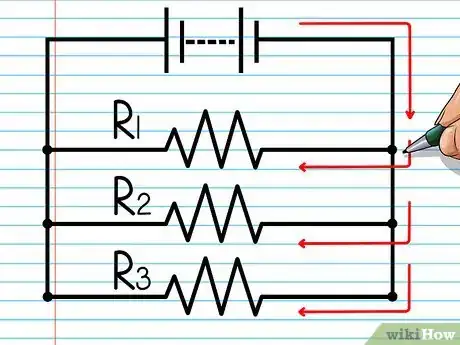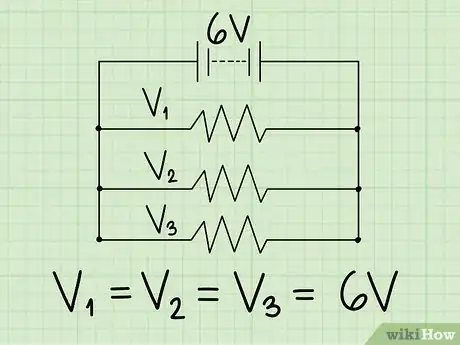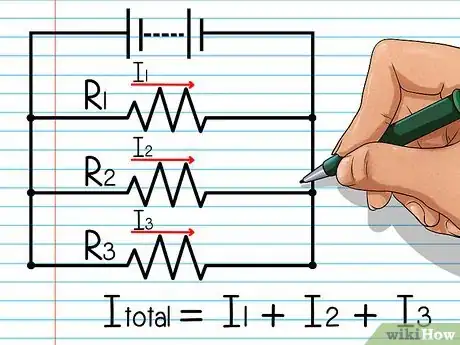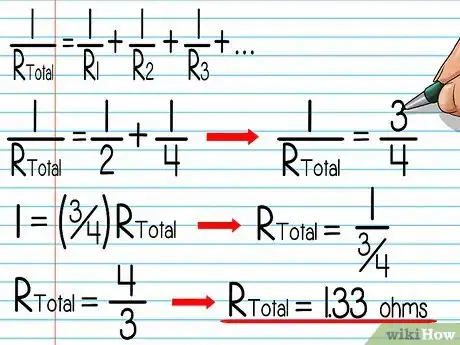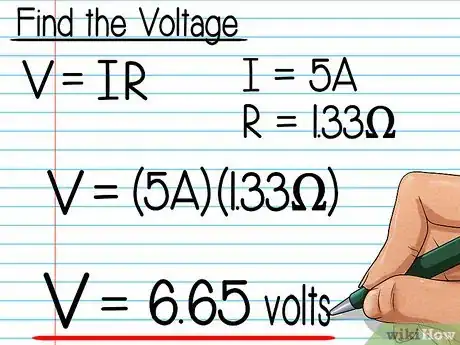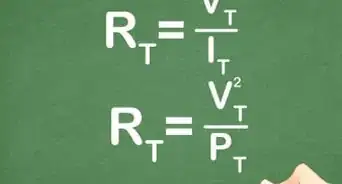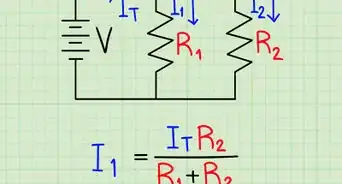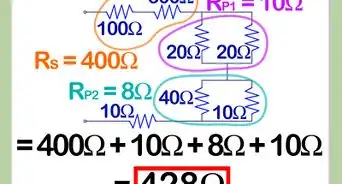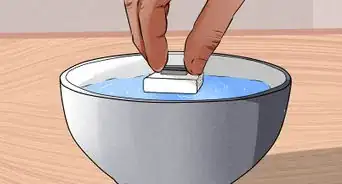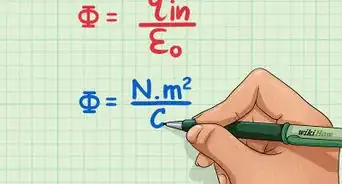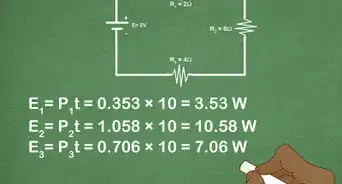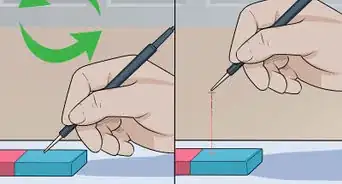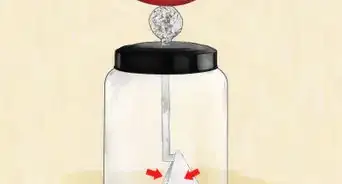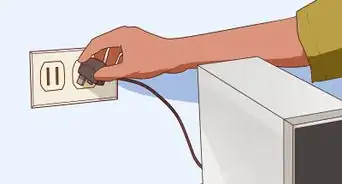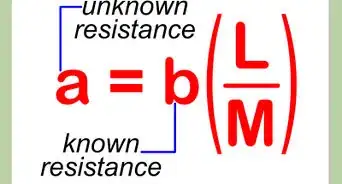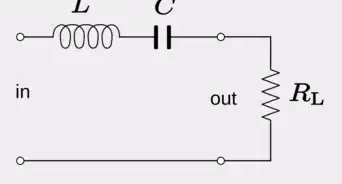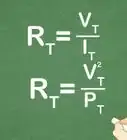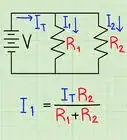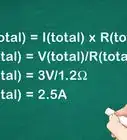This article was co-authored by Mantas Silvanavicius. Mantas Silvanavicius is a Licensed Electrician and the Owner of M+S Electric based in Las Vegas, Nevada. With more than 20 years of experience, he specializes in home electrical installations, testing, and wiring. Mantas and his team have completed projects for companies such as Seiko and Springhill Suites by Marriott. M+S Electric is licensed, bonded, and insured.
There are 9 references cited in this article, which can be found at the bottom of the page.
wikiHow marks an article as reader-approved once it receives enough positive feedback. This article received 28 testimonials and 89% of readers who voted found it helpful, earning it our reader-approved status.
This article has been viewed 901,595 times.
Before you can calculate the voltage across a resistor, you'll first have to determine what kind of circuit you are using. If you need a review of the basic terms or a little help understanding circuits, start with the first section. Otherwise, jump ahead to the type of circuit you have to solve.
Steps
Understanding Circuits
-
1Learn about current. Let’s think about current by using an analogy: imagine you pour a bag of corn kernels into a bowl. Each corn kernel is an electron, and the stream of kernels flowing into the bowl is the current.[1] When talking about the flow, you describe it by saying how many kernels are flowing each second. When talking about a current, you measure it in amperes (amps), or a certain (very large) number of electrons flowing per second.
-
2Think about electrical charge. Electrons have a "negative" electrical charge. This means they attract (or flow toward) objects with a positive charge, and repel (or flow away from) objects with a negative charge. Since they're all negative, electrons are always trying to push away from other electrons, spreading out wherever they can.Advertisement
-
3Understand voltage. Voltage measures the difference in electrical charge between two points. The greater the difference, the more energetically the two sides attract each other. Here's an example with an everyday battery:
- Inside a battery, chemical reactions happen that produces a buildup of electrons. The electrons go to the negative end, while the positive end stays mostly empty. (These are called the negative and positive terminals.) The longer this goes on, the larger the voltage between the two ends.
- When you connect a wire between the negative and positive ends, the electrons at the negative end suddenly have somewhere to go. They shoot toward the positive end, creating a current. The larger the voltage, the more electrons move to the positive end each second.
-
4Figure out resistance. Resistance is exactly what it sounds like. The more resistance something has, the harder it is for the electrons to push through. This slows the current, since fewer electrons can push through each second.
- A resistor is anything in the circuit that adds resistance. You can buy an actual "resistor" at an electronics store, but in a circuits problem it might represent a light bulb or anything else with resistance.
-
5Memorize Ohm's Law. There's a very simple relationship between current, voltage, and resistance.[2] Write this down or memorize it; you'll use it often when solving circuit problems:
- Current = voltage divided by resistance
- This is usually written: I = V / R
- Think about what happens when you increase V (voltage) or R (resistance). Does this match what you learned in the explanations above?
Calculating Voltage across a Resistor (Series Circuit)
-
1Understand a series circuit. A series circuit is easy to identify. It's just one loop of wire, with everything arranged in a row. The current flows around the entire loop, going through each resistor or element in order.
- The current is always the same at any point along the circuit.[3]
- When calculating voltage, it doesn't matter where the resistor is on the circuit. You can pick up the resistors and move them around, and you'll still have the same voltage across each one.
- We'll use an example circuit with three resistors in series: R1, R2, and R3. This is powered by a 12 volt battery. We'll find the voltage across each one.
-
2Calculate the total resistance. Add together all resistance values on the circuit. The answer is the total resistance of the series circuit.
- For example, the three resistors R1, R2, and R3 have resistances of 2 Ω (ohms), 3 Ω, and 5 Ω respectively. The total resistance is 2 + 3 + 5 = 10 ohms.
-
3Find the current. Use Ohm's Law to find the current of the entire circuit. Remember, the current is the same anywhere on a series circuit. Once we calculate the current this way, we can use it for all our calculations.
- Ohm's Law says that the current I = V / R. The voltage across the whole circuit is 12 volts, and the total resistance is 10 ohms. The answer is I = 12 / 10 = 1.2 amperes.
-
4
-
5Calculate the voltage across each resistor. We know the resistance, we know the current, and we have our equation. Plug in the numbers and solve. Here's our example problem solved for all three resistors:
- Voltage across R1 = V1 = (1.2A)(2Ω) = 2.4 volts.
- Voltage across R2 = V2 = (1.2A)(3Ω) = 3.6 volts.
- Voltage across R3 = V3 = (1.2A)(5Ω) = 6.0 volts.
-
6Check your answer. In a series circuit, the sum of all your answers must equal the total voltage.[5] Add up every voltage you calculated and see if you get the voltage of the entire circuit. If you didn't, go back and check for mistakes.
- In our example, 2.4 + 3.6 + 6.0 = 12 volts, the voltage across the whole circuit.
- If your answer is slightly off (for instance, 11.97 instead of 12), you probably rounded a number at some point. Your answer is still correct.
- Remember, voltage measures the differences in charge, or numbers of electrons. Imagine counting the number of new electrons you see as you travel along the circuit. If you count them correctly, you're going to end up with the total change in electrons from the beginning to the end.
Calculating Voltage across a Resistor (Parallel Circuit)
-
1Understand parallel circuits. Imagine a wire leaving one end of a battery, then splitting into two separate wires. These two wires run parallel to each other, then join up again before they reach the other end of the battery. If there's a resistor on the left wire and a resistor on the right wire, those two resistors are connected "in parallel."[6]
- You can have any number of wires in a parallel circuit. These instructions will still work for a circuit that splits into one hundred wires and comes back together.
-
2Think about how the current flows. In a parallel circuit, the current flows across each path available to it. Current will flow through the wire on the left, cross the left resistor, and reach the other end. At the same time, current will flow through the wire on the right, cross the right resistor, and reach the end. No part of the current doubles back or flows through two parallel resistors.
-
3Use the total voltage to find the voltage across each resistor. If you know the voltage across the whole circuit, the answer is surprisingly easy. Each parallel wire has the same voltage as the entire circuit.[7] Let's say a circuit with two parallel resistors is powered by a 6 volt battery. The voltage across the left resistor is 6 volts, and the voltage across the right resistor is 6 volts. It doesn't even matter how much resistance there is. To understand why, think back to the series circuits described above:
- Remember that adding voltage drops in a series circuit always results in the total voltage across the circuit.
- Think of each path the current takes as a series circuit. The same holds true for this: if you count up all the voltage drops, you'll end up with the total voltage.
- Since the current through each of the two wires only passes through one resistor, the voltage across that resistor must equal the total voltage.
-
4Calculate the total current of the circuit. If the problem doesn't tell you what the total voltage of the circuit is, you'll need to complete a few more steps. Start by finding the total current passing through the circuit. In a parallel circuit, the total current is equal to the sum of the current running through each parallel path.[9]
- In mathematical terms: Itotal = I1 + I2 + I3...
- If you're having trouble understanding this, imagine a water pipe split into two paths. The total amount of water flow is just the amount of water flow in each pipe, added together.
-
5Compute the total resistance of the circuit. Resistors are not as effective in a parallel circuit, because they only block the current going along one wire. In fact, the more wires there are, the easier it is for the current to find a way through. To find the total resistance, solve for Rtotal in this equation:[9]
- 1 / Rtotal = 1 / R1 + 1 / R2 + 1 / R3 ...
- For example, a circuit has a 2 ohm and a 4 ohm resistor in parallel. 1 / Rtotal = 1/2 + 1/4 = 3/4 → 1 = (3/4)Rtotal → Rtotal = 1/(3/4) = 4/3 = ~1.33 ohms.
-
6Find the voltage from your answers. Remember, once we find the total voltage of the circuit, we have found the voltage across any one of the parallel wires. Solve for the whole circuit using Ohm's law.[10] Here's an example:
- A circuit has 5 amperes of current running through it. The total resistance is 1.33 ohms.
- According to Ohm's Law, I = V / R, therefore V = IR
- V = (5A)(1.33Ω) = 6.65 volts.
Community Q&A
-
QuestionWhat is the percentage of applied voltage that will be dropped across r3=70 if r1=80 and r2=50?
 Community AnswerIt would be 35%. The higher the resistance, the higher the voltage drop. The ratio of resistances here is 80:50:70. Solving for 70 ohms, we get 35%.
Community AnswerIt would be 35%. The higher the resistance, the higher the voltage drop. The ratio of resistances here is 80:50:70. Solving for 70 ohms, we get 35%. -
QuestionWhat is the voltage of a 60 ohm resistor if the circuit voltage is 150 volts with two parallel 30 ohm resistors and one 60 ohm resister in the series?
 Community AnswerAssuming you intend to ask what is the voltage drop across the 60 ohm resistor, the answer is 120v. The two parallel 30 ohm resistors have an equivalent resistance of 15 ohms. 1/(1/30 + 1/30) = 15. The total resistance appears as 75 ohms to the 150v source. Find the circuit current by I = E/R or I = 150/75 = 2 amps. Find the voltage drop for the 60 ohm resistor with E = I x R or E = 2 x 60 = 120V drop across the 60 Ohm resistor.
Community AnswerAssuming you intend to ask what is the voltage drop across the 60 ohm resistor, the answer is 120v. The two parallel 30 ohm resistors have an equivalent resistance of 15 ohms. 1/(1/30 + 1/30) = 15. The total resistance appears as 75 ohms to the 150v source. Find the circuit current by I = E/R or I = 150/75 = 2 amps. Find the voltage drop for the 60 ohm resistor with E = I x R or E = 2 x 60 = 120V drop across the 60 Ohm resistor. -
QuestionWhat becomes the Voltage if we use 2 resistors of 4W in parallel?
 Community AnswerAs any other data is not provided, the voltage across two resistors of 4w in parallel is the same.
Community AnswerAs any other data is not provided, the voltage across two resistors of 4w in parallel is the same.
References
- ↑ Serway, R.A. and John W. Jewett, Jr., Physics for Scientists and Engineers with Modern Physics. 8th edition. California: Brooks/Cole. 2010. Ebook
- ↑ https://phet.colorado.edu/en/simulations/ohms-law
- ↑ https://energyeducation.ca/encyclopedia/Series_circuit
- ↑ https://www.hsa.org.uk/electricity/current-voltage-and-resistance
- ↑ https://www.swtc.edu/ag_power/electrical/lecture/series_circuits.htm
- ↑ https://www.allaboutcircuits.com/textbook/direct-current/chpt-5/simple-parallel-circuits/
- ↑ http://www.physicsclassroom.com/class/circuits/Lesson-4/Parallel-Circuits
- ↑ Serway, R.A. and John W. Jewett, Jr., Physics for Scientists and Engineers with Modern Physics. 8th edition. California: Brooks/Cole. 2010. Ebook
- ↑ https://phys.libretexts.org/Bookshelves/University_Physics/Book%3A_University_Physics_(OpenStax)/Book%3A_University_Physics_II_-_Thermodynamics_Electricity_and_Magnetism_(OpenStax)/10%3A_Direct-Current_Circuits/10.03%3A_Resistors_in_Series_and_Parallel
- ↑ https://phys.libretexts.org/Bookshelves/University_Physics/Book%3A_University_Physics_(OpenStax)/Book%3A_University_Physics_II_-_Thermodynamics_Electricity_and_Magnetism_(OpenStax)/10%3A_Direct-Current_Circuits/10.03%3A_Resistors_in_Series_and_Parallel
- ↑ http://www.electronics-tutorials.ws/resistor/res_5.html
About This Article
To calculate voltage across a resistor in a series circuit, start by adding together all of the resistance values in the circuit. Then, divide the voltage across the circuit by the total resistance to find the current. Once you have the current, calculate voltage for the individual resistors by multiplying the current by the resistance. For example, in a series circuit with 3 resistors of 2, 3 and 5 Ohms, and a voltage of 12 volts, the current would be 12 divided by 10, or 1.2 amperes. For the 2 Ohm resistor, the voltage would be 1.2 times 2, or 2.4 volts. If you want to learn how to calculate voltage in a parallel circuit, keep reading the article!
